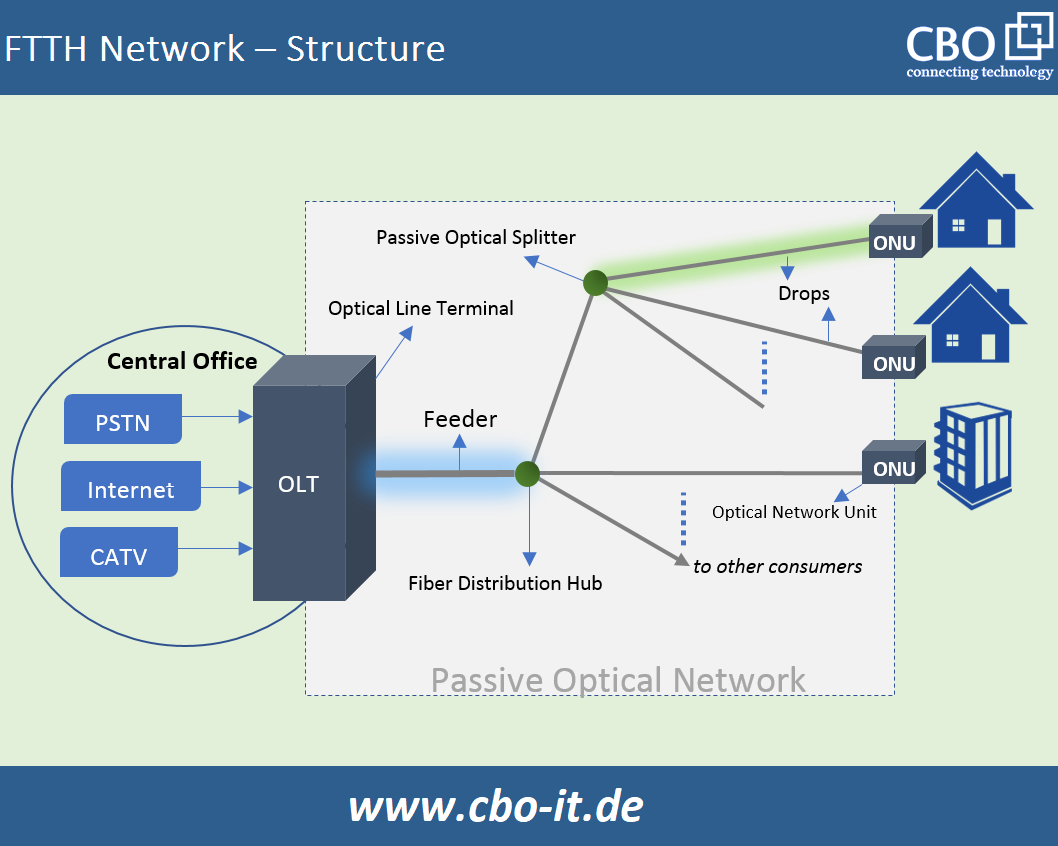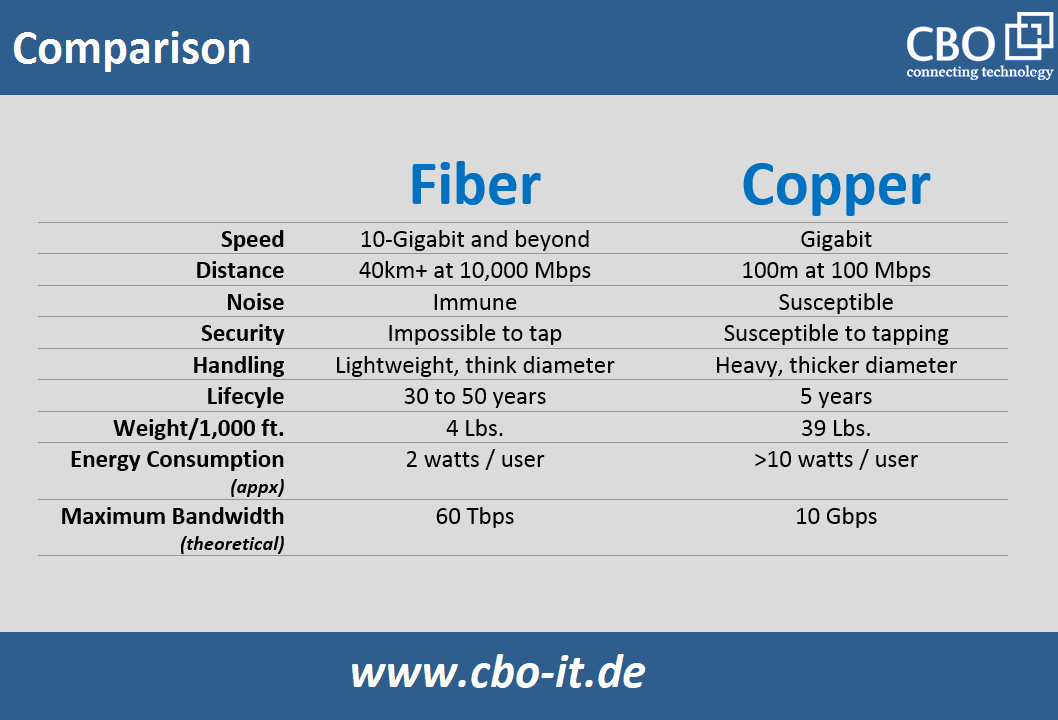Fiber-to-the-home (FTTH) or fiber-to-the-premises (FTTP) involves the direct installation and connection of optical fiber to a single building or structure, such as a residence, apartment, or commercial property. This method of providing internet services continues to gain popularity worldwide due to its superior performance compared to traditional DSL and non-fiber coaxial cable connections.
Unlike coaxial cable and telephone lines that rely on electrical data transmission, fiber optic cables transmit data through light signals, enabling faster speeds and higher bandwidths up to 1Gbps and beyond. As web-based cloud and services become more prevalent in consumer and business markets worldwide, expanding the optical fiber infrastructure to the premises guarantees top-notch performance and opens the door to future technological innovations.
Projections about FTTH
According to a report by Fiber Broadband Association (previously FTTH Council Americas), the COVID-19 pandemic has highlighted the importance of high-speed internet, with FTTH networks playing a critical role in enabling remote work, telemedicine, and distance learning. The demand for higher broadband speeds and the rise of video streaming services are driving the growth of the FTTH market globally. Here are some forecasts on FTTH:
- According to a report by ResearchAndMarkets, the global FTTH market is expected to grow at a compound annual growth rate (CAGR) of 4.9% from 2021 to 2026. The report predicts that the global FTTH market will reach $11.8 billion by 2026.
- Zion Market Research reports that the global FTTH market will reach a value of $11.8 billion by 2025, growing at a CAGR of 5.5% from 2019 to 2025.
- The FTTH Council Europe predicts that FTTH/B (fiber-to-the-home/building) connections in Europe will reach 202 million by 2026, up from 93.5 million in 2019.
- A report by Fiber Broadband Association forecasts that the number of global FTTH/B subscribers will reach 1 billion by 2025.
How does FTTH work?
In an FTTH setup, data is transmitted using optical fiber as the primary medium throughout the network, with direct connections to homes from the central office. The Optical Distribution Network (ODN) connects the main office to homes. It typically uses a passive optical network (PON) architecture, which includes passive elements like 1xN optical splitters for signal splitting and distribution. This makes FTTH more cost-effective and reliable than fiber-based services requiring powered components.
The basic elements of a standard FTTH network infrastructure include an Optical Line Terminal (OLT) located in the central office, an ODN (Optical Distribution Network) in between the central office and homes, which comprises 1xN passive optical splitters, and Optical Network Terminals or Optical Network Units (ONTs/ONUs) at homes or premises. It's essential to note that the ODN segment of the FTTH network can have various fiber segments based on the design architecture. An optical fiber known as a "feeder" that starts from the central office can be divided into multiple "distribution" fibers, each of which serves a primary cabinet in a neighborhood or complex.
A typical FTTH network architecture can be explained best with a diagram. The image below illustrates the layout and different components of a standard FTTH network.

Finally, certain service providers now offer to supply a dedicated fiber connection directly to the subscriber's premises, ensuring that the optical signal is not shared among consumers or entities. This approach provides maximum speeds and bandwidth to each user but typically comes at a higher cost.
Currently, these dedicated fiber services are primarily offered for business FTTP with significant speed and bandwidth needs, as installing dedicated, end-to-end optical fiber cables for each home would necessitate an exponential number of fibers that would be neither efficient nor cost-effective.
What are the advantages of FTTH for consumers?
The benefits of FTTH for a consumer are numerous. The need for higher internet speed and bandwidth will only increase as the years go by. FTTH is well-prepared for future technological advancements in fiber, as optical fiber can support much more significant amounts of data than current optical network devices and is not limited by data rate. Therefore, FTTH will continue to offer faster speeds and more data. Over the past decade, there has been a significant change in the way people enjoy home entertainment. The entire family is now using various devices to access high-definition video content that demands more bandwidth, while online gaming has become increasingly popular. Moreover, many consumer services, such as eCommerce, online banking, and social media, are now available online.
Cloud storage and computing enable remote access to business systems and software applications, which requires fast and reliable internet connections for efficient job functions, especially those working from home. Both homes and businesses need such a connection to access digital data stored off-premises. In recent years, cloud computing has gained immense popularity, and with remote work becoming more common, it is expected to continue growing globally.
The rise of Internet-of-Things (IoT) devices for home use, such as home security systems and utility management systems (for instance, controlling lights and temperature), is another reason FTTH is preferred over other internet services. With FTTH, these services can operate more efficiently and effectively due to the higher speeds and greater data capacity offered by fiber optic networks.
Overall, the popularity of these data-intensive services and products highlights the advantages of FTTH and fiber optic networks over older technologies like coax and DSL/telephone line services, which may need to be able to handle the growing demands of data-driven services and products.
What are the advantages of FTTH over DSL and COAX?
FTTH has several benefits over older technologies like DSL, coax, and hybrid fiber-coax (HFC). As mentioned earlier in the article, the primary advantage is that optical fiber can support faster speeds and greater bandwidth, making it a more future-proof solution.
But there are other advantages to using optical fiber compared to DSL and copper-based coax systems. These include:
- Immunity to electromagnetic interference (EMI)
- Higher resistance to environmental changes
- More cost-effective, space-efficient, and lightweight
Companies can produce optical fiber optic cables for less cost than copper wire of the same length. They have become the primary transmission medium for most communication networks. While the "last mile" segment from the central hub to the home still uses coax in many cases, most newer networks are replacing legacy technologies and installing fiber and fiber-capable devices throughout the network (or wherever possible) due to its various benefits, as noted in this article.
The table below provides a comprehensive comparison between fiber and copper cables, with fiber emerging as the clear winner due to its superior performance in terms of speed, bandwidth, and distance. However, one major challenge associated with fiber cables is their relatively higher cost compared to copper cables.

What are some challenges of FTTH?
Although FTTH provides several advantages, like any other technology, some challenges may arise when deploying FTTH network access and services:
Accessibility Challenges
The first challenge is obtaining sufficient access to successfully upgrade or construct a new fiber network. This may require permits from local authorities, approved rights-of-way, or resistance from other service providers who own the existing infrastructure needed to provide FTTH and may not want competitors in their area. Thus, service providers may need to overcome several administrative obstacles before beginning construction.
Cost related Challenges
The second challenge is the cost associated with upgrading or building a complete fiber-based FTTH network, which includes the necessary time, labor, and equipment. Companies that choose this approach are usually either large entities that can raise a significant investment or smaller ISPs that have secured large amounts of funding from investors in millions of dollars.
These two challenges, cost and accessibility are the most significant hurdles a company may face when attempting to implement FTTH. However, optical fiber presents specific challenges that can occur, similar to any other technology.
Signal Loss Management
Optical fiber is a glass strand that carries light signals, resulting in inevitable signal loss that occurs naturally over distances and as it passes through network components. Proper routing of fibers is critical in avoiding sharp bends and excessive signal loss. Engineers must account for fiber distances and loss points to maintain an acceptable signal level at the consumer's end. fiber optic cables can suffer damage similar to other types of cables, making quick identification of issues like cuts or degraded connections essential for ensuring reliable service. Well-trained and skilled fiber technicians are also vital for installing, maintaining, troubleshooting, and repairing fiber optic systems and cables to provide the most dependable service to customers.
Conclusion
In conclusion, FTTH is a modern technology that offers significant benefits over legacy approaches like coaxial and DSL systems. With faster speeds, greater bandwidth, and the ability to future-proof networks, FTTH is becoming the go-to choose for service providers looking to provide reliable high-speed internet access. While there are some challenges to implementing FTTH, its advantages make it an attractive option for companies and consumers. As demand for faster and more reliable internet access continues to grow, FTTH will become even more prevalent in the coming years.
 English
English
 Deutsch
Deutsch
 Espaniol
Espaniol










